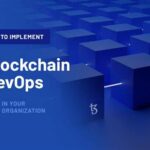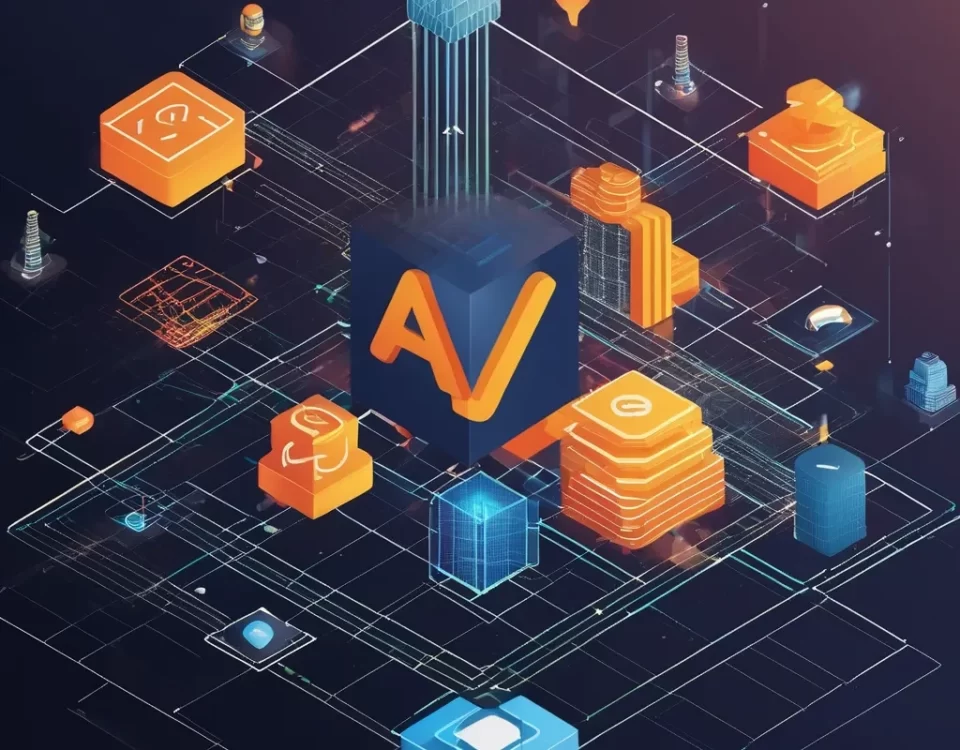
Securing Your Business from Unauthorized AI Use
February 23, 2025
Blockchain and DevOps | Secure CICD Integration
April 7, 2025Use Cases of LLM agents
LLM agents can integrate modules to enhance their autonomy and perform tasks beyond the capability of standard LLMs. For example, in a customer service context, a simple LLM might respond to a query such as, “My laptop screen is flickering, and it’s still under warranty. What should I do?” with generic troubleshooting advice, such as restarting the device. If the issue persists, the LLM might suggest further steps. However, complex tasks including verifying warranty status, processing refunds, or arranging repairs require human intervention. LLM agents address this by incorporating the following modules to handle such scenarios autonomously:
- Multimodality Augmentation: Enables the LLM agent to process images alongside text, allowing tasks such as analyzing a photo of a defective product for more accurate diagnosis.
- Tool Use: Allows the agent to interact with backend systems, verify warranty status, and automate actions like initiating refunds for faulty products.
- Memory: Enables the agent to recall previous interactions, recognize recurring issues, and tailor responses based on past experiences.
- Reflection: Enhances output by assessing responses pre- and post-interaction. Feedback collected is used to iteratively improve future responses.
- Community Interaction: Facilitates collaboration among specialized agents. For instance, a technical agent can handle complex issues, escalating to human experts if necessary, ensuring access to specialized and supervised support.
Moreover, it can be applied in various situation such as employee empowerment; code creation; data analysis; cybersecurity; and creative ideation and production. Check out 185 proposed applications of LLM agents here.
AI agents and AGI
Some academics argue that the agent paradigm is a plausible pathway to achieving Artificial General Intelligence (AGI). Proponents of this view suggest that these systems, which leverage multi-modal understanding and reality-agnostic training through generative AI and independent data sources, embody key characteristics of AGI. Indeed, a recent Stanford survey illustrates that when foundation models for agent tasks are trained on cross-reality data, they exhibit adaptability to both physical and virtual contexts. This adaptability, as they argue, underscores the viability of the agent paradigm as a step toward AGI.
Deep dive on LLM modules
This section provides a deeper dive explanation of the current technical practices of agentic designs briefly covered above, namely Multimodality, Tool Use, Memory, Refection, and Community Interaction.
Multimodal Augmentation
Multimodal augmentation enhances LLM autonomy by enabling the processing of text, images, audio, and video. A typical Multimodal Large Language Model (MLLM) includes two key components: a pre-trained modality encoder, which converts non-text data into processable tokens or features, and a modality connector, which integrates these inputs with the LLM.
Tool Use
Tool-use enhances LLMs by enabling interactions with external tools like APIs, databases, and interpreters, addressing their limitations in accessing real-time data and performing specialized tasks. This capability expands problem-solving, expertise, and environment interaction.
The tool-use process includes four stages:
- Task planning breaks queries into sub-tasks to clarify intent
- Tool selection identifies the best tool via retriever- or LLM-based methods
- Tool calling extracts parameters and retrieves information
- Response generation integrates the tool’s output with the LLM’s knowledge for a complete response.
Memory
Memory is essential for LLM agents, enabling them to recall experiences, adapt to feedback, and maintain context for real-world interactions. It supports complex tasks, personalization, and autonomous evolution.
The memory mechanism consists of three steps:
- Memory writing (W), which captures and stores information as raw data or summaries;
- Memory management (P), which organizes, refines, or discards stored data, abstracting high-level knowledge for efficiency;
- Memory reading (R), which retrieves relevant information for decision-making. These processes enable agents to retain context and effectively apply knowledge across tasks.
Reflection
LLM reflection enhances decision-making during inference without retraining, avoiding the need for extensive datasets and fine-tuning. It provides flexible feedback (scalar values or free-form) and improves tasks like programming, decision-making, and reasoning. Studies on Chain of Thought and test-time computation demonstrate that intermediate reasoning and adaptive computation enhance performance.
The Reflexion framework includes three models: the Actor, which performs actions (e.g., tool use, response generation); the Evaluator, which scores the outcomes of actions; and the Self-Reflection model, which provides feedback stored in long-term memory for future improvement. This iterative process allows the agent to refine its approach with each cycle.
Community Interaction
Large Language Model-based Multi-Agent (LLM-MA) systems employ multiple specialized LLMs to collaboratively solve complex problems, enabling advanced applications in software development, multi-robot systems, policymaking, and game simulation. These systems, with specialized profiles and environments, outperform single-agent models in handling intricate problems and simulating social dynamics.
Key components include:
- Agent profiling, where agents are specialized for specific tasks;
- Communication, using cooperative, competitive, or debate formats;
- Environment interaction, via interfaces like sandboxes or physical setups;
- Capability acquisition, allowing agents to learn from the environment or each other through memory and reflection.
Risks of LLM Agents
Design Insufficiencies:
- Privacy: Sensitive data exposure, GDPR non-compliance.
- Bias: Reinforced stereotypes, unfair outputs.
- Sustainability: High energy use, environmental impact.
- Efficacy: Poor multimodal/tool integration, memory errors.
- Transparency: Opaque decision-making, low accountability.
Operational Challenges:
- Misalignment: Harmful prioritization, over-dependency.
- Adversarial Attacks: Prompt injection, memory poisoning.
- Malicious Use: Manipulation, surveillance, social scoring.
Solution: Proactive governance, audits, and compliance checks.


